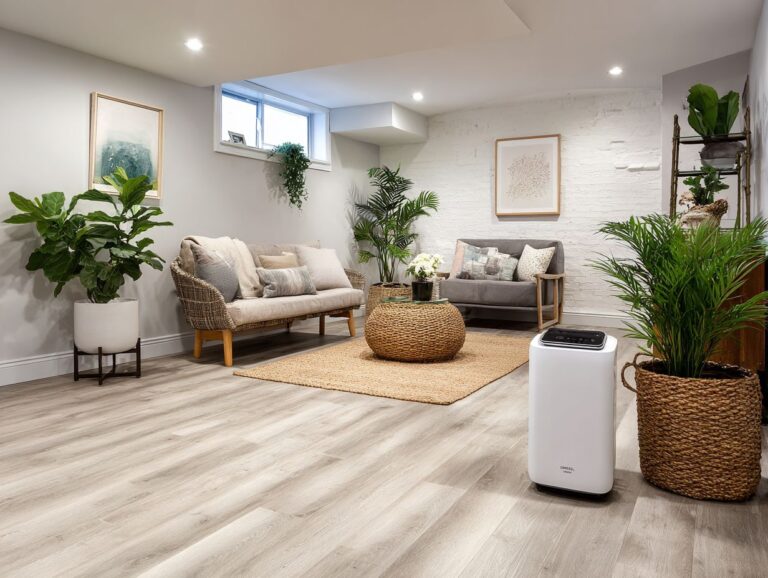Price Matching in Flooring – How to Negotiate
Contents
- Introduction to Price Matching in Flooring
- Understanding Flooring Types
- Flooring Price Comparison Statistics
- Researching Competitors
- Preparing for Negotiation
- Engaging with Retailers
- Effective Negotiation Strategies
- Closing the Deal
- Post-Negotiation Considerations
- Frequently Asked Questions
- What is price matching in flooring and how can I negotiate a better deal?
- Can I still negotiate a price match if the flooring is already on sale?
- Are there any limitations to price matching in flooring?
- What if I find a lower price for the flooring after I have already made my purchase?
- Is it possible to negotiate a better deal on installation services as well?
- What should I do if a store refuses to honor a price match or negotiate a better deal?
Introduction to Price Matching in Flooring

Key Takeaways:
What is Price Matching?
Price matching is a retail policy where stores agree to match lower prices offered by competitors on identical items.
For example, Flooring Inc. and Home Depot both offer price matching, letting customers take advantage of lower prices.
If you find a laminate flooring option for $2.50 per square foot at a competing store, simply bring proof of the lower price to the retailer. Request to match it, which can lead to significant savings, especially on large projects.
This policy helps buyers by reducing costs and combining purchases at a favorite store, which often provides extra services like warranties or delivery.
Why is Price Matching Important?
Price matching can save buyers significant amounts, ensuring they don’t pay more than necessary for flooring materials.
For instance, many retailers promise price matching, offering savings that average around 20% on flooring purchases.
A buyer may find a laminate floor priced at $3.00 per square foot at one retailer, while another offers it for $2.50. By using price matching, the buyer can get the lower price and save up to $500 on a 1,000-square-foot project.
Tools like BrickSeek can help you check product availability and prices at various stores, making it easier to find deals and save money.
Understanding Flooring Types
Selecting the right type of flooring is important for how a home looks and functions, affecting both cost and how long it lasts. To better understand the financial implications, consider using our Flooring Budget Calculator to plan your expenses effectively.
Different Flooring Materials
Flooring materials come in various forms, including hardwood (like cherry and oak), laminate, and tile, each with unique characteristics.
Hardwood flooring costs about $5 per square foot, lasts a long time, and looks good, but it might need to be refinished after a while. It’s ideal for living rooms or bedrooms where aesthetics matter.
Laminate flooring, priced from $1 to $3 per square foot, looks like wood or stone and is more scratch-resistant, making it suitable for high-traffic areas such as hallways.
Tile, often priced between $1 and $20 per square foot, offers a waterproof option perfect for kitchens or bathrooms.
Choosing the right material hinges on factors such as budget, location, and desired aesthetic.
Price Variations Among Flooring Types
Prices for flooring can vary dramatically based on material, design, and installation complexity, affecting overall budget.
Softwoods like pine usually range from $3 to $6 per square foot, offering an affordable choice for homeowners. In contrast, high-end hardwoods such as walnut can cost between $8 to $15 per square foot.
Engineered wood provides a cost-effective option, usually costing $4 to $10 per square foot, and is known for its strong durability. When considering installation, factor in an additional $1.50 to $5 per square foot, depending on the complexity of the project and local labor rates.
By comparing these options, you can better align your flooring choice with your budget. For a more detailed breakdown of potential costs, including hidden expenses, refer to our hidden gem guide on flooring costs.
Flooring Price Comparison Statistics
Flooring Price Comparison Statistics
Flooring Costs: Material Costs per Square Foot
Flooring Costs: Installation Costs per Square Foot

The Flooring Price Comparison Statistics provides a thorough review of flooring choices, examining costs for materials and installation by square foot. Knowing these costs can help buyers and experts choose wisely depending on their budget and design choices.
Material Costs per Square Foot reveal varying prices across flooring types.
- Traditional Hardwood costs $9.5, while Exotic Hardwood is pricier at $13.25, reflecting the premium on rarity and aesthetic appeal. Engineered Wood offers a more affordable alternative at $8.0, combining durability and appearance.
- Bamboo, a sustainable choice, comes in at $9.0, whereas Cork is slightly less at $6.75, known for its eco-friendly and insulating properties.
- Laminate, at $2.0, represents budget-friendly options, appealing for its ease of installation and maintenance. In contrast, Natural Stones command $10.5, bearing the hallmark of luxury and longevity.
- Concrete (Polished) sits at $9.375, appreciated for its modern aesthetics and durability. For those considering softer textures, Carpeting and Linoleum Rolls are $4.75 and $4.25, respectively, offering warmth and acoustic benefits.
Installation Costs per Square Foot can significantly impact the overall budget.
- Ceramic Tiles installation costs are the highest at $18.0, possibly because of the detailed work needed, while Natural Stones are even more at $22.5, reflecting the skill required. Porcelain Tiles demand $13.0 for installation, balancing cost and sophistication.
- Hardwood and Bamboo installations are $4.75, reasonable given their installation complexity. Engineered Wood installation is $7.0, indicative of its layered structure requiring careful handling.
- Conversely, Vinyl Tiles and Linoleum are economical at $1.3 and $1.05, respectively, appealing for budget-conscious projects. Loose-lay floors cost $2.5 for installation, favored for their simplicity and flexibility.
The Flooring Price Comparison Statistics explain the flooring materials and installation market Choices range from luxurious natural stones and hardwoods to cost-effective laminates and vinyls, each offering distinct advantages and price points. A thorough cost review helps match flooring options with budget needs and style preferences.
Researching Competitors
Studying competitors in detail helps buyers use pricing information to negotiate better deals.
Identifying Local Competitors
Knowing local flooring stores and learning about their pricing can help you when discussing costs.
- Start by using Google Maps to pinpoint flooring retailers in your area. Make a list of at least five stores, noting their addresses and contact details.
- Next, check Yelp for reviews to gauge customer satisfaction and any mentions of pricing. Visit or call these retailers to inquire about their pricing for similar products. This could involve asking about discounts or promotions.
- Check local directories like Angie’s List for more names and information. Writing down this information helps clarify the local market situation.
Online Competitors and Pricing
Many people shop for flooring online, often finding lower prices that can help them negotiate better deals with local stores.
To research your online competitors effectively, use comparison tools such as PriceGrabber and Google Shopping. Start by entering keywords related to your desired flooring type, such as `hardwood’ or `carpet’, and filter by price ranges.
Some popular online flooring sites include:
- Empire Today
- Lumber Liquidators
- Home Depot
Analyze their pricing as well as any ongoing promotions. This will give you information on market rates and help you talk about prices with local shops, so you can make well-informed choices.
Preparing for Negotiation
To negotiate well when buying flooring, start by clearly knowing what you need and how much you can spend.
Gathering Pricing Information
Collecting detailed pricing information from multiple sources helps create a solid foundation for negotiation.
Begin by visiting popular retail websites like Amazon and Best Buy to get baseline prices. Use online tools such as Google Shopping or PriceGrabber to quickly collect prices from different stores.
It’s also beneficial to track fluctuations; consider keeping a simple spreadsheet noting prices and store names over time. This helps you find patterns and use what you learn in conversations.
Don’t forget to check for any ongoing promotions or rebates that may further influence your final price.
Understanding Your Needs and Budget
Clarifying your flooring needs and setting a specific budget is essential before engaging in negotiations.
Start by assessing your personal preferences through a self-assessment checklist that includes factors like durability, aesthetics, and maintenance.
For example, if you prioritize low upkeep, consider vinyl or laminate options.
Next, factor in installation costs, which can range from $1 to $5 per square foot, depending on the material. Remember that hardwood may need to be refinished every few years, while tile typically requires less upkeep.
Match your choices to your budget for a good flooring result.
Engaging with Retailers
Having a good relationship with flooring retailers can improve negotiations and result in better deals.
Choosing the Right Time to Negotiate

Timing your negotiation can significantly influence the outcome, with certain periods offering better opportunities for discounts.
For example, negotiating at the end of a season often yields the best results, as retailers look to clear inventory.
During major holiday events like Black Friday or end-of-year sales, discounts can range from 20% to 50% on flooring materials. Contacting retailers during less busy times like mid-winter or mid-summer could lead them to give special deals to bring in more customers.
Always ask about seasonal sales or any available loyalty discounts, which can add further savings to your final price.
Building Rapport with Sales Representatives
Establishing rapport with sales reps can be a critical factor in achieving a favorable negotiation outcome.
To build rapport effectively, start by asking about current flooring trends in the market, such as eco-friendly options or popular designs. This shows you’re informed and genuinely interested.
Give them praise for their skills, which creates a friendly environment. For example, saying, “Thanks for your thoughts on eco-friendly materials!” can make a difference.
Use CRM software to record interactions and notes about their preferences or personal details they’ve shared, strengthening your bond in upcoming conversations.
Effective Negotiation Strategies
Using good negotiation tactics can help buyers get the best deals and build friendly relationships with retailers.
Presenting Your Findings
Presenting well-researched pricing information can strengthen your negotiating position with retailers.
- Start by gathering competitive prices from various retailers, both online and in-store. Use tools like Google Shopping and PriceGrabber to create a comparison chart.
- Document each price with screenshots or printouts for easy reference. Articulate the advantages of your research by highlighting significant price differences or special deals.
- For instance, if one retailer consistently offers a lower price for the same item, emphasize this during negotiations. This concrete data backs up your position and shows that you’re well-prepared, increasing the chances that retailers will meet your requests.
Leveraging Competitor Pricing
Using competitor pricing can help make a strong case for matching or reducing prices from retailers.
To effectively negotiate, start by gathering competitor prices using apps like CamelCamelCamel or Honey, which track price changes on popular items.
When approaching a retailer, present this data respectfully, highlighting specific examples. For instance, if a competitor offers a similar product for $50 less, explain how that impacts your buying decision.
Be courteous and show your commitment as a customer, pointing out that a price match will strengthen your connection with the retailer. This method encourages working together instead of competing against each other.
Being Open to Compromises
Flexibility in negotiations can often result in a win-win situation for both buyers and retailers.
For instance, a buyer might initially request a bulk discount but could offer to accept a later delivery date in exchange for better pricing.
Similarly, a retailer could provide complimentary services, such as free shipping on orders over a certain amount, while the buyer agrees to a minimum purchase requirement.
Negotiation over warranty terms-like extending the period in exchange for a slightly higher price-can satisfy both parties’ needs. These adjustments demonstrate a collaborative spirit, often leading to more favorable agreements.
Closing the Deal
Successfully closing a deal requires being careful and knowing the terms and conditions set by retailers.
Confirming the Price Match Policy
Knowing a store’s price match rules helps you use this option when shopping.
To effectively confirm the policy, start by asking specific questions:
- Does the retailer match online prices?
- Are there exclusions (e.g., clearance or open-box items)?
Next, gather the necessary documentation, such as the competitor’s pricing and product details. When you present your case, be clear and concise; mention the competitor’s price upfront. It’s often helpful to have a printout or a screenshot ready.
Shopping early can help you get better prices and make your experience more fun.
Understanding Terms and Conditions

Knowing the terms and conditions of your flooring purchase is important to avoid surprise costs or problems.
- Start by reviewing key sections such as warranty details, installation requirements, and maintenance obligations. Pay attention to specific clauses regarding damage liability or customer-reported issues.
- For example, if an agreement says you need to tell the installer about an issue within 30 days of spotting it, make sure you know what that means. Don’t hesitate to ask questions about ambiguous language; clarity now can save you headaches later.
- A good practice is to compare contracts from different suppliers to identify any unusual clauses that could affect your investment.
Post-Negotiation Considerations
Post-negotiation steps are important for ensuring satisfaction and resolving any issues after the agreement is finalized.
Reviewing Your Purchase
Checking your flooring purchase helps you confirm your satisfaction and spot any problems for later.
Start by checking the quality of the material-look for scratches or discoloration. Check the installation for gaps or uneven surfaces.
If you notice any issues, document them with photos and write down specific details. This documentation will be helpful for warranty claims or if you need to consult a professional.
Also, reflect on your overall experience: Did the flooring meet your expectations in terms of comfort and style? This review can help with upcoming improvements and buying decisions.
Follow-Up with Retailers
Following up with retailers after a flooring purchase is essential for addressing any lingering issues or questions.
Start by checking your purchase receipt for warranty details and contact information.
Reach out to customer service via phone or email, clearly stating your concerns-whether it’s about installation, defects, or maintenance. For example, if the flooring is bubbling, describe the problem with photos as evidence.
Inquire about recommended care products or services to maintain your floor’s quality. If needed, think about arranging a follow-up visit at home to make sure the flooring meets expectations over time.
Frequently Asked Questions
What is price matching in flooring and how can I negotiate a better deal?
Price matching in flooring means that a store will sell a product at the same lower price if a competitor is offering it for less. To negotiate a better deal, it is important to do your research and come prepared with evidence of the lower price from a competitor. Be polite and explain your budget and the value you are looking for in the flooring, and most stores will be willing to work with you.
Can I still negotiate a price match if the flooring is already on sale?
Yes, it is still possible to negotiate a price match even if the flooring is already on sale. Stores are often willing to match the sale price of a competitor’s product, as they do not want to lose out on a potential sale. It is always worth asking and providing evidence of the lower price to see if the store will honor the price match.
Are there any limitations to price matching in flooring?
While many stores have a price matching policy, there may be limitations or exclusions for certain products or competitors. It is important to check with the store beforehand to see if the product you want to purchase and the competitor’s price are eligible for a price match. Some stores may also require that the product is in stock at the competitor’s store.
What if I find a lower price for the flooring after I have already made my purchase?
If you find a lower price for the flooring you have already purchased, it is always worth contacting the store to see if they will honor a price match. Some stores have a price match guarantee for a certain period of time after the purchase, and may refund the difference if you can provide proof of the lower price. There’s no harm in asking if you can get a discount.
Is it possible to negotiate a better deal on installation services as well?
Yes, it is possible to negotiate a better deal on installation services when purchasing flooring. Some stores may offer a price match on installation services or may be willing to lower the cost if you are purchasing flooring from them. It is always worth inquiring about a discount or a price match on installation services to get the best overall deal.
What should I do if a store refuses to honor a price match or negotiate a better deal?
If a store refuses to honor a price match or negotiate a better deal, it is important to remain polite and calm. You can always reach out to a manager or contact the store’s customer service to discuss the issue and see if a resolution can be reached. If all else fails, you can always take your business to a different store that may be more willing to work with you.




